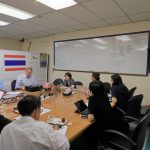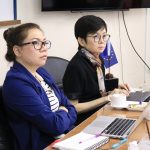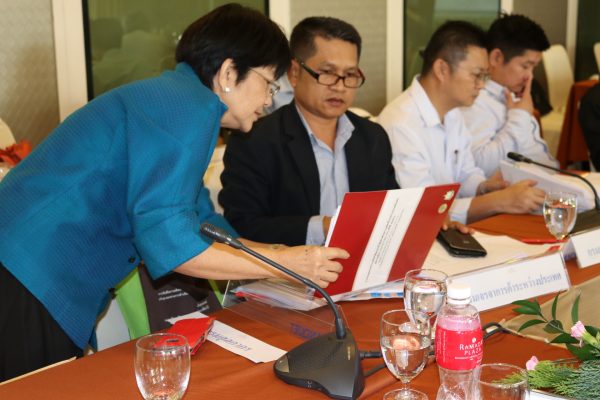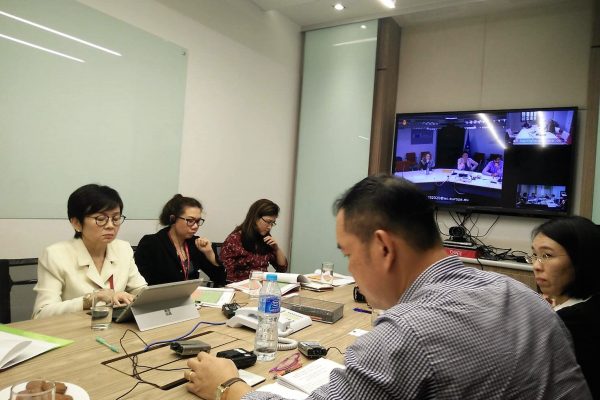18 October 2017 – Mr. James Sandom and Ms. Pawinee Udommai met Forestry Officers from Royal Forest Department, Experts from European Forest Institute, and Officers from TEFSO in order to confer about timber legality system or TLAS of Thailand.
There are key points from the meeting as follows:
1. The ways to conduct TLAS in Thailand
According to TC Meeting on 17 October 2017, Mr. Alexander Hinrichs summarized the ways to certify timber that are categorized into three parts: agricultural part, middle-man part, and industrial/mills part.
For the agricultural part, there are three distinguished ways: self-declaration of Tree Bank, tree-certification of Plantation Cooperative by third party, and ASSO technology of Thai Hevea Association.
For the middle-man part, there are two groups: timber’s ownership group which documents are shown, and timber’s non-ownership group acting as a broker who only gives a suggestion to farmers and mills which no document of timber legality are shown and there is no law controlling.
Industrial part will be regulated by the currently existing law.
Nevertheless, certification system might be more than one, but it depends on variety of operators, source, etc.
2. Mr. Thomas de Francqueville, Legality Assurance System Expert from EFI, explained examples of FLEGT VPA from Liberia, Malaysia, and Indonesia.
3. TLAS Description
There are five elements of TLAS which are LD, CoC, Verification, Independent Audit, and License Scheme. However, there might be additional elements in TLAS such as management of nonconformity, roles of civil society in order to build participation and governance under issuing FLEGT license.
No matter how many TLAS systems are, TLAS should be considered by different scales of operators, risks, and minimum requirements. Furthermore, a good TLAS does not let illegal timber or non-compliant timber return to the system.







![[EN] TLAS Thailand EFI](https://tefso.org/wp-includes/images/crystal/document.png)

